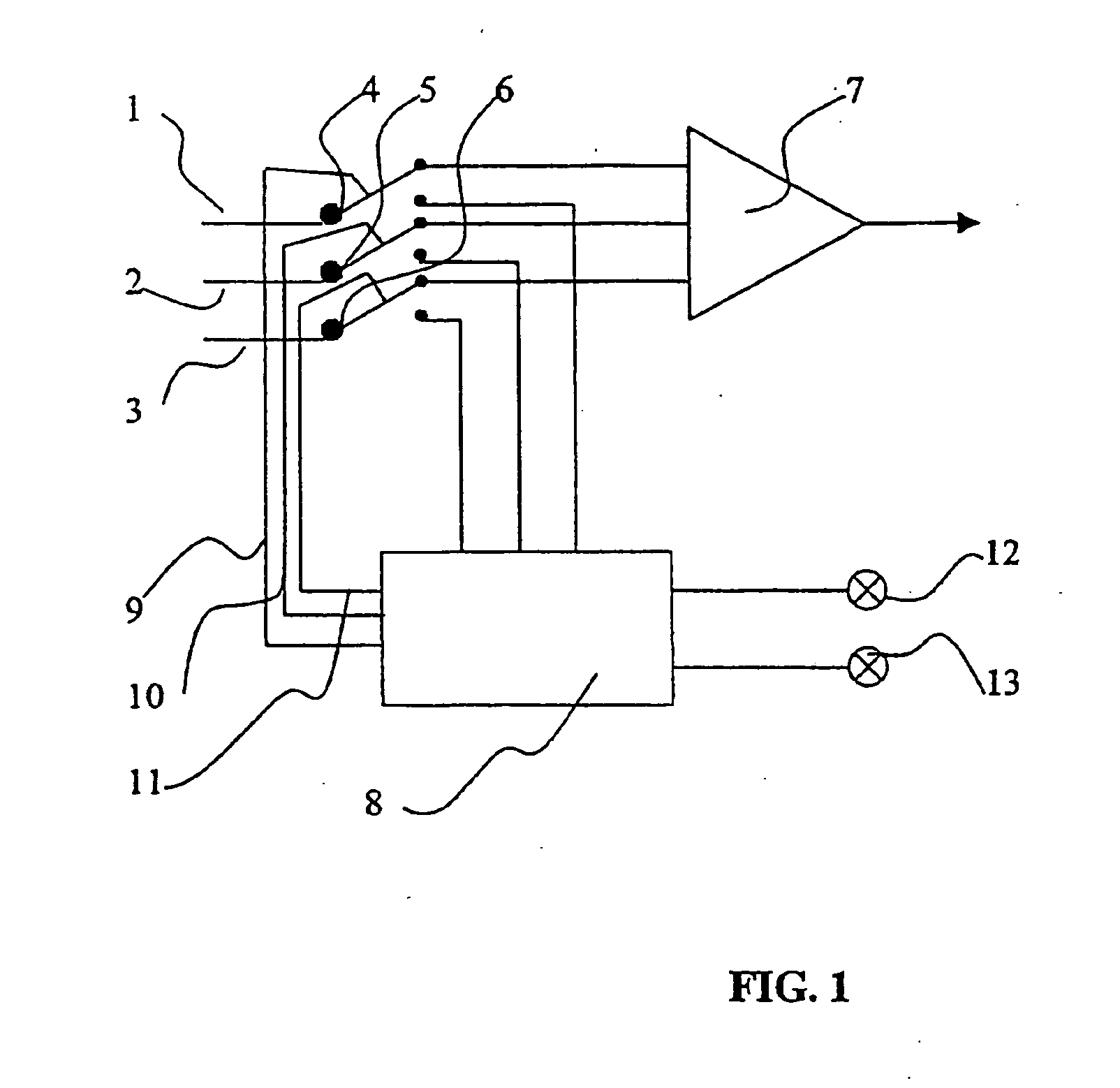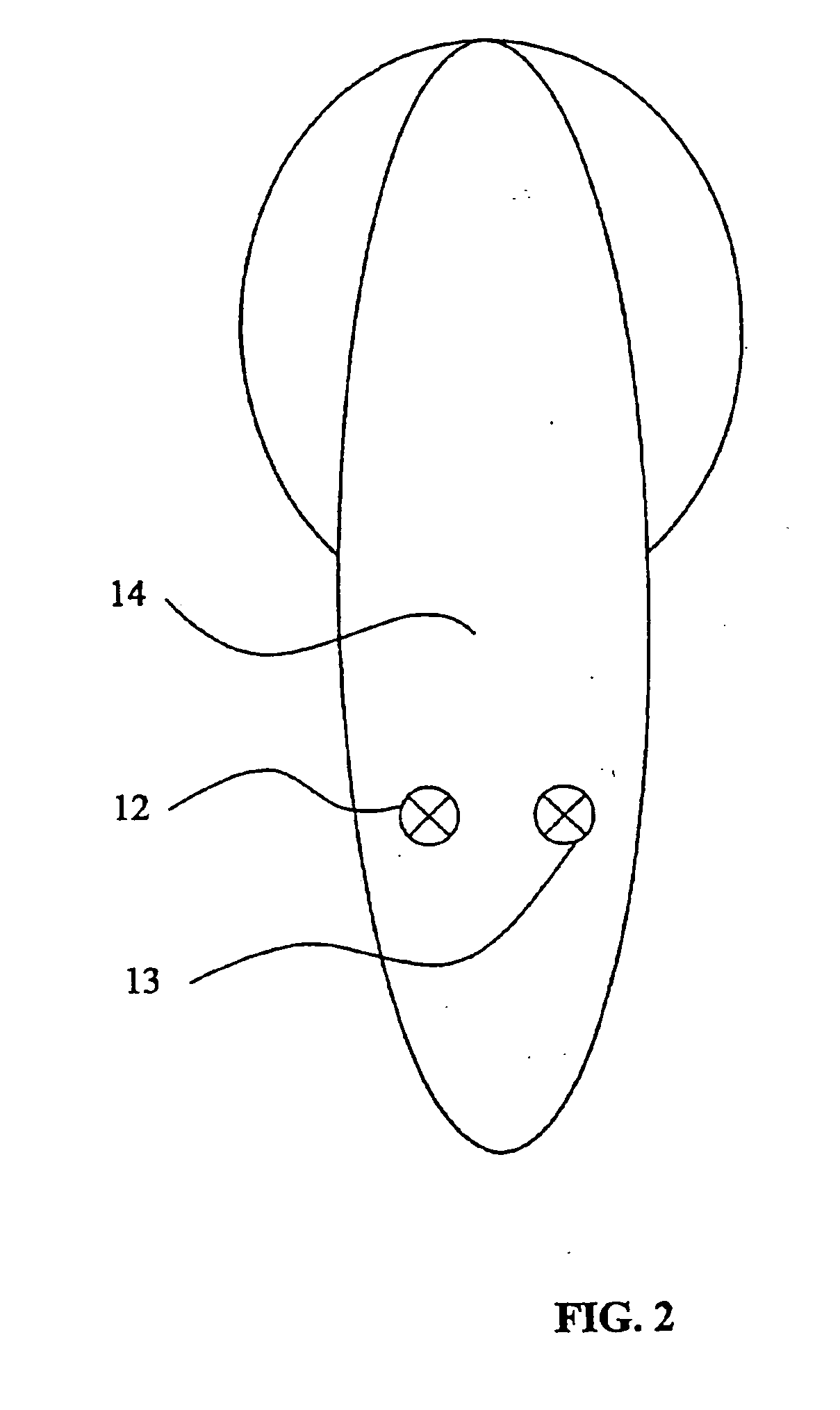Device for determining acoustically evoked brain potentials
a brain potential and acoustically evoked technology, applied in the field of brain potential determination devices, can solve the problems of poor measurement, low impedance, and not always simple task, and achieve the effect of minimizing the possibility of stray potentials being picked up
- Summary
- Abstract
- Description
- Claims
- Application Information
AI Technical Summary
Benefits of technology
Problems solved by technology
Method used
Image
Examples
Embodiment Construction
[0019] The device according to the invention will now be described briefly in terms of its important details, with reference to the embodiments shown in the enclosed drawings.
[0020] From FIG. 1 a schematic diagram appears. The diagram shows three inputs 1,2,3 each leading to switches 4,5,6. The switches switch between a measuring mode and a test mode. In the measuring mode the input signals are transmitted to an EEG amplifier 7 and further to an audiometer used in a measuring process. In the test mode the impedance is measured between the electrode and the skin of the individual on which the electrodes are placed. The test of the impedance is carried out with a predetermined sampling frequency and is controlled by the control electronics 8 adapted to control the switches via connections 9,10,11. The result of the impedance measurement is indicated by the diodes 12,13, where one indicates a too high level of the impedance and the other one indicates a satisfactory low level of the i...
PUM
 Login to View More
Login to View More Abstract
Description
Claims
Application Information
 Login to View More
Login to View More - R&D
- Intellectual Property
- Life Sciences
- Materials
- Tech Scout
- Unparalleled Data Quality
- Higher Quality Content
- 60% Fewer Hallucinations
Browse by: Latest US Patents, China's latest patents, Technical Efficacy Thesaurus, Application Domain, Technology Topic, Popular Technical Reports.
© 2025 PatSnap. All rights reserved.Legal|Privacy policy|Modern Slavery Act Transparency Statement|Sitemap|About US| Contact US: help@patsnap.com



